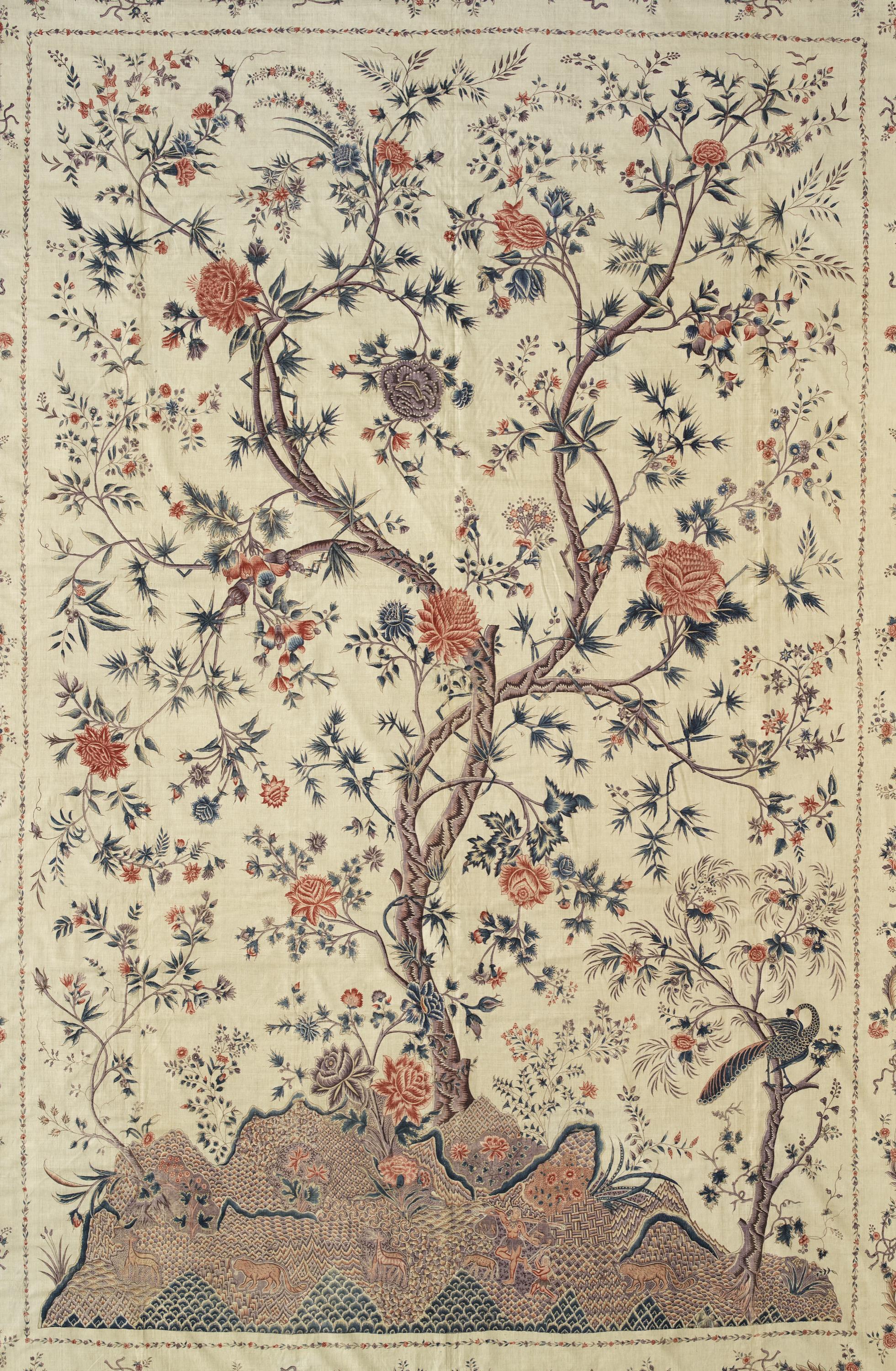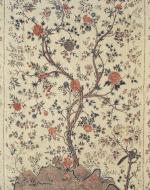Created by Jayani Patel on Fri, 12/03/2021 - 00:48
Description:
The palampore is a floral textile created for European trade and consumption. This piece of cloth was used as a bed cover or hung up as decoration. The textile consists of mountains with ragged edges, floral vines, various patterns and animals and human figures. The bed cover was created for European trade as well as for Dutch people that were in Indonesia and Sri Lanka. Heavy influences of Middle-Eastern and Hindu culture were implemented into the creation of palampores; with each piece carefully handcrafted with intricate designs using the Kalamkari technique which involves twenty-three steps. Each step is important in getting the correct colour and design across to the viewer. These textiles often depict the “Tree of Life'' which carried various meanings across the cultures they were produced in. In Christianity it represented second chances, in Islam the trees is an example of good or bad behaviour, in Judaism the tree holds wisdom and in the Hindu/Buddist cuture the tree is meant to grant wishes to those in need. William Gilpin talks about the picturesque and how it is meant to bring roughness to the beauty of landscapes, this text aims to describe what breaking down a painting to show the realness can do for its beauty. It is meant to bring roughness to the beauty of landscapes similar to how they are depicted in the palampore.
Key Words: Picturesque, Rugged, Nature, Palampore, Textile


